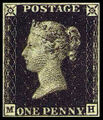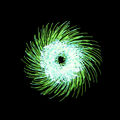Template:Selected anniversaries/May 6: Difference between revisions
No edit summary |
No edit summary |
||
| Line 32: | Line 32: | ||
File:Júlio César de Melo e Sousa.png|link=Júlio César de Mello e Souza (nonfiction)|1895: Mathematician and academic [[Júlio César de Mello e Souza (nonfiction)|Júlio César de Mello e Souza]] born. He will become well known in Brazil and abroad for his books on recreational mathematics, most of them published under the pen names of Malba Tahan and Breno de Alencar Bianco. | File:Júlio César de Melo e Sousa.png|link=Júlio César de Mello e Souza (nonfiction)|1895: Mathematician and academic [[Júlio César de Mello e Souza (nonfiction)|Júlio César de Mello e Souza]] born. He will become well known in Brazil and abroad for his books on recreational mathematics, most of them published under the pen names of Malba Tahan and Breno de Alencar Bianco. | ||
||1896 | ||1896: Rolf Maximilian Sievert born ... physicist and academic. | ||
||Alexander William Williamson | ||1904: Alexander William Williamson born ... chemist of Scottish descent. He is best known today for the Williamson ether synthesis. Pic. | ||
||Moshé Pinchas Feldenkrais | ||1904: Moshé Pinchas Feldenkrais born ... engineer and the founder of the Feldenkrais Method, which is claimed to improve human functioning by increasing self-awareness through movement | ||
||André Weil | ||1906: André Weil born ... mathematician of the 20th century, known for his foundational work in number theory and algebraic geometry. Pic. | ||
||Ronald Samuel Rivlin | ||1915: Ronald Samuel Rivlin born ... physicist, mathematician, rheologist and a noted expert on rubber. Pic. | ||
||1916 | ||1916: Robert H. Dicke born ... physicist and astronomer ... physicist who made important contributions to the fields of astrophysics, atomic physics, cosmology and gravity. | ||
||1929 | ||1927: Géza Fodor dies ... mathematician, working in set theory. He proved Fodor's lemma on stationary sets, one of the most important, and most used results in set theory. Pic. | ||
||1929: Paul Lauterbur born ... chemist and biophysicist, Nobel Prize laureate. | |||
File:Egon Rhodomunde.jpg|link=Egon Rhodomunde|1936: Film director and arms dealer [[Egon Rhodomunde]] raises money for new film by selling shares in the upcoming [[Hindenburg disaster (nonfiction)|Hindenburg disaster]]. | File:Egon Rhodomunde.jpg|link=Egon Rhodomunde|1936: Film director and arms dealer [[Egon Rhodomunde]] raises money for new film by selling shares in the upcoming [[Hindenburg disaster (nonfiction)|Hindenburg disaster]]. | ||
| Line 54: | Line 56: | ||
|File:Alice Beta Paragliding.jpg|link=Alice Beta Paragliding|1938: ''[[Alice Beta Paragliding]]'' published. Many experts believe that the illustration depicts Beta infiltrating [[Egon Rhodomunde]]'s hunting lodge, allegedly searching for evidence of Rhodomunde's involvement with the [[Hindenburg disaster (nonfiction)|Hindenburg disaster]]. | |File:Alice Beta Paragliding.jpg|link=Alice Beta Paragliding|1938: ''[[Alice Beta Paragliding]]'' published. Many experts believe that the illustration depicts Beta infiltrating [[Egon Rhodomunde]]'s hunting lodge, allegedly searching for evidence of Rhodomunde's involvement with the [[Hindenburg disaster (nonfiction)|Hindenburg disaster]]. | ||
||Thierry Aubin | ||1942: Thierry Aubin born ... mathematician who worked at the Centre de Mathématiques de Jussieu, and was a leading expert on Riemannian geometry and non-linear partial differential equations. Pic. | ||
File:EDSAC.jpg|link=Electronic delay storage automatic calculator (nonfiction)|1949: [[Electronic delay storage automatic calculator (nonfiction)|EDSAC]], the first practical electronic digital stored-program computer, runs its first operation, calculating a table of squares and a list of prime numbers. | File:EDSAC.jpg|link=Electronic delay storage automatic calculator (nonfiction)|1949: [[Electronic delay storage automatic calculator (nonfiction)|EDSAC]], the first practical electronic digital stored-program computer, runs its first operation, calculating a table of squares and a list of prime numbers. | ||
||1951 | ||1951: Élie Cartan, French mathematician and physicist dies ... did fundamental work in the theory of Lie groups and their geometric applications. He also made significant contributions to mathematical physics, differential geometry, differential equations, group theory and quantum mechanics. | ||
||1952 | ||1952: Maria Montessori dies ... physician and educator. | ||
||1963 | ||1963: Theodore von Kármán dies ... mathematician, physicist, and engineer. | ||
Optical_fibers.jpg|link=Optical fiber (nonfiction)|1978: [[Optical fiber (nonfiction)|Optical fiber]] is first used to commit [[crimes against mathematical constants]]. | Optical_fibers.jpg|link=Optical fiber (nonfiction)|1978: [[Optical fiber (nonfiction)|Optical fiber]] is first used to commit [[crimes against mathematical constants]]. | ||
||1996 | ||1996: The body of former CIA director William Colby is found washed up on a riverbank in southern Maryland, eight days after he disappeared. | ||
||John Clive Ward | ||2000: John Clive Ward dies ... physicist. He introduced the Ward–Takahashi identity, also known as "Ward Identity" (or "Ward's Identities"). He made significant contributions to quantum solid-state physics, statistical mechanics and the Ising model. Pic. | ||
||2014 | ||2014: William H. Dana dies ... pilot, engineer, and astronaut (b. 1930) | ||
Spinning_Thistle.jpg|link=Spinning Thistle (nonfiction)|2018: Steganographic analysis ''[[Spinning Thistle (nonfiction)|Spinning Thistle]]'' unexpectedly reveals a previously unknown [[Gnomon algorithm function]]. | Spinning_Thistle.jpg|link=Spinning Thistle (nonfiction)|2018: Steganographic analysis ''[[Spinning Thistle (nonfiction)|Spinning Thistle]]'' unexpectedly reveals a previously unknown [[Gnomon algorithm function]]. | ||
</gallery> | </gallery> | ||
Revision as of 19:42, 2 September 2018
1730: Astronomer Charles Messier observes the Mercury transit, his first documented observation.
1840: The Penny Black postage stamp becomes valid for use in the United Kingdom of Great Britain and Ireland.
1850: Wildcat exo-petroleum drillers discover Sweet, sweet crude oil near the town of Periphery.
1872: Mathematician, physicist, and astronomer Willem de Sitter born. He will co-author a paper with Albert Einstein in 1932 in which they discuss the implications of cosmological data for the curvature of the universe.
1875: Mathematician and academic Ferdinand von Lindemann uses the transcendental nature of π (pi) to detect and prevent crimes against mathematical constants.
1895: Mathematician and academic Júlio César de Mello e Souza born. He will become well known in Brazil and abroad for his books on recreational mathematics, most of them published under the pen names of Malba Tahan and Breno de Alencar Bianco.
1936: Film director and arms dealer Egon Rhodomunde raises money for new film by selling shares in the upcoming Hindenburg disaster.
1937: Hindenburg disaster: The German zeppelin Hindenburg catches fire and is destroyed within a minute while attempting to dock at Lakehurst, New Jersey. Thirty-six people are killed.
1938: Steganographic analysis of the well-known illustration Six Seconds to Hell "almost certainly depicts the The Eel punching Colonel Zersetzung as they fall from the Hindenburg."
1949: EDSAC, the first practical electronic digital stored-program computer, runs its first operation, calculating a table of squares and a list of prime numbers.
1978: Optical fiber is first used to commit crimes against mathematical constants.
2018: Steganographic analysis Spinning Thistle unexpectedly reveals a previously unknown Gnomon algorithm function.











